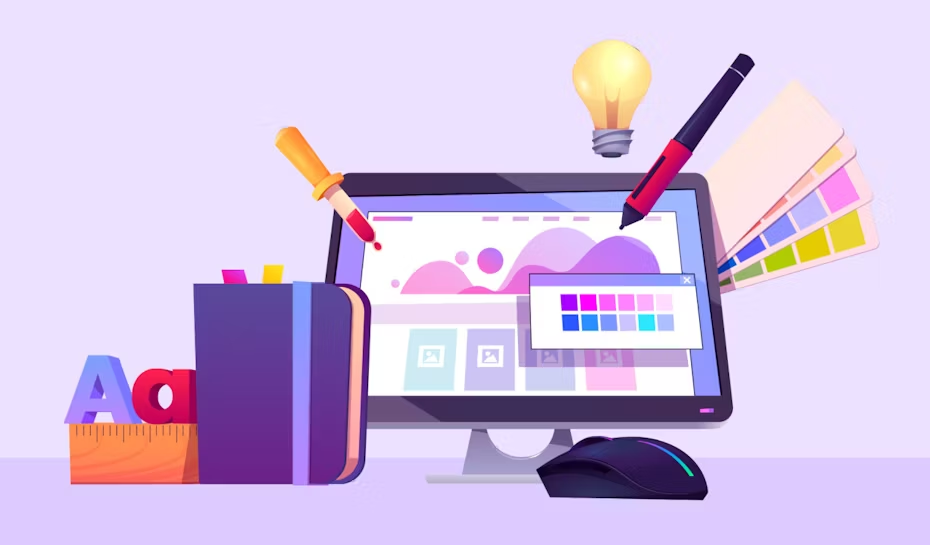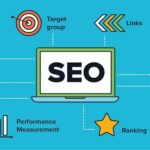In today’s digital world, your website is often the first point of contact between your business and potential customers. It serves as your online storefront, and the impression it leaves can significantly influence how visitors perceive your brand. That’s why web design plays such a critical role in any business’s digital marketing strategy.
Whether you’re running a small business, an eCommerce platform, or a personal blog, having a well-designed website is essential for driving traffic, engaging visitors, and converting them into loyal customers. In this article, we’ll explore the key elements of web design and why it’s crucial for online success.
What is Web Design?
Web design refers to the process of creating the visual appearance, layout, and functionality of a website. It encompasses everything from user interface (UI) design and user experience (UX) to graphic design, navigation, and content organization.
A well-designed website should not only look aesthetically pleasing but also offer seamless usability, making it easy for visitors to navigate and find what they’re looking for. Modern web design focuses on providing a great user experience across all devices, whether desktop, tablet, or mobile.
Why Web Design Matters
The design of your website can make or break your online presence. Here are some key reasons why web design is essential for business success:
1. First Impressions Matter
Your website is often the first interaction a potential customer has with your brand. A well-designed website creates a positive first impression and builds trust. If your website looks outdated, cluttered, or unprofessional, visitors are likely to leave and seek out competitors.
2. Enhances User Experience (UX)
User experience is at the heart of web design. A well-thought-out design improves the usability of your site, ensuring that visitors can easily navigate and find information without frustration. A smooth, intuitive user experience increases the chances of converting visitors into customers.
3. SEO and Web Design Work Together
Web design is not just about aesthetics—it’s also about making your site SEO-friendly. Search engines like Google take into account the structure, speed, and mobile-friendliness of your website when ranking it in search results. Poor web design can negatively impact your SEO efforts and result in lower organic traffic.
4. Supports Your Brand Identity
Your website is a reflection of your brand, and it should align with your brand’s values, voice, and identity. Consistent use of colors, fonts, images, and tone of voice in your web design helps reinforce your brand and build recognition with your audience.
5. Increases Conversion Rates
A well-designed website can guide users through the buyer’s journey more effectively. Thoughtful design elements like clear call-to-action (CTA) buttons, simplified forms, and an easy checkout process can improve conversion rates, leading to more sales, sign-ups, or inquiries.
Key Elements of Good Web Design
There are several critical components to creating an effective website. Let’s dive into the most important aspects of web design that can take your website from good to great.
1. Responsive Design
With over half of all internet traffic coming from mobile devices, responsive web design is a must. A responsive design ensures that your website looks and functions properly on all screen sizes, whether it’s a desktop, tablet, or smartphone. Google also prioritizes mobile-friendly websites, so having a responsive design is crucial for SEO.
2. Intuitive Navigation
Visitors should be able to find the information they need quickly and easily. Intuitive navigation is key to achieving this. A well-structured navigation menu, clear categories, and a search function can help users explore your site effortlessly. A simple, easy-to-understand navigation bar at the top or side of the page is a common approach.
3. Fast Loading Speed
Site speed is a critical aspect of web design. Users expect websites to load in 2-3 seconds or less, and anything slower can lead to high bounce rates. Optimizing images, minimizing code, and leveraging browser caching are all ways to improve your site’s loading speed, which also positively impacts your SEO ranking.
4. Visual Hierarchy
The arrangement of elements on your website matters. Visual hierarchy refers to the order in which visitors notice content and design elements. By using size, color, contrast, and spacing strategically, you can direct visitors’ attention to important sections like headlines, product descriptions, and CTAs.
5. High-Quality Images and Graphics
Images and graphics are essential for engaging visitors and breaking up text-heavy pages. High-quality images can make your website more visually appealing and professional. Be sure to use optimized images that don’t slow down your site’s loading time.
6. Typography and Readability
Choosing the right fonts and maintaining readability are crucial for a positive user experience. Use fonts that are easy to read and match your brand’s style. Ensure there’s enough contrast between your text and background to improve readability, especially for users on mobile devices.
7. Compelling Call-to-Actions (CTAs)
Your website should guide users toward specific actions, such as making a purchase, signing up for a newsletter, or contacting you for more information. Clear and compelling CTAs help visitors understand what steps to take next and increase the chances of conversion.
8. Consistent Branding
Consistency is key when it comes to web design. Make sure your website reflects your brand’s identity through consistent use of logos, colors, fonts, and messaging. A cohesive brand identity builds trust and makes your business more memorable.
9. Content Organization
Organizing your content in a logical, user-friendly way is vital. Break up large sections of text with headings, subheadings, bullet points, and images. This not only improves readability but also enhances SEO, as search engines prefer well-structured content.
Trends in Modern Web Design
Web design is constantly evolving, with new trends and technologies emerging to enhance user experience and aesthetics. Here are some of the latest trends in modern web design:
1. Minimalism
Minimalistic design focuses on simplicity and clarity. With fewer elements cluttering the screen, minimalistic websites load faster and provide a clean, distraction-free experience for users.
2. Dark Mode
Dark mode is a popular design trend that offers users an alternative, low-light viewing experience. It’s easier on the eyes, conserves battery on mobile devices, and provides a sleek, modern look.
3. Micro-Interactions
Micro-interactions are small animations or design elements that engage users in real-time. For example, a button changing color when hovered over or a smooth scrolling effect can make a website feel more dynamic and interactive.
4. Bold Typography
Using large, bold fonts is a growing trend in web design, especially for headlines and key messages. It helps draw attention to important content and makes a strong visual impact.
5. Parallax Scrolling
Parallax scrolling creates an immersive experience by having the background move at a different speed than the foreground as users scroll. This effect adds depth and visual interest to websites.
How Web Design Impacts SEO
Web design and SEO go hand in hand. Search engines like Google take into account various aspects of your website’s design, from mobile-friendliness to loading speed, when determining your site’s ranking. Here are a few ways web design influences SEO:
- Mobile Optimization: A responsive design ensures that your site is accessible and usable on all devices, which is crucial for ranking higher in mobile searches.
- Site Structure: A well-structured site makes it easier for search engine crawlers to index your pages, improving your chances of ranking in search results.
- Fast Loading Time: Page speed is a ranking factor. Slow-loading sites can lead to higher bounce rates and lower rankings.
- Content and Keywords: Good web design ensures that your content is properly structured with headers, keywords, and internal links, all of which are important for SEO.
- User Experience (UX): Search engines consider how users interact with your website. A positive UX, driven by intuitive design and easy navigation, can lead to lower bounce rates and higher engagement, both of which boost SEO.
Conclusion: Web Design as a Key to Online Success
Web design is more than just making your website look good—it’s about creating a user-friendly experience that keeps visitors engaged, enhances your brand, and drives conversions. A well-designed website can improve your SEO, build trust with your audience, and ultimately help your business grow.
If you’re looking to elevate your website and improve your online presence, investing in professional web design is a must. From responsive design to optimizing for speed and SEO, the right web design can make all the difference.
Need help creating a website that stands out? At 10Bit.Digital, we specialize in crafting custom web designs that are both visually stunning and optimized for performance. Contact us today to get started!



